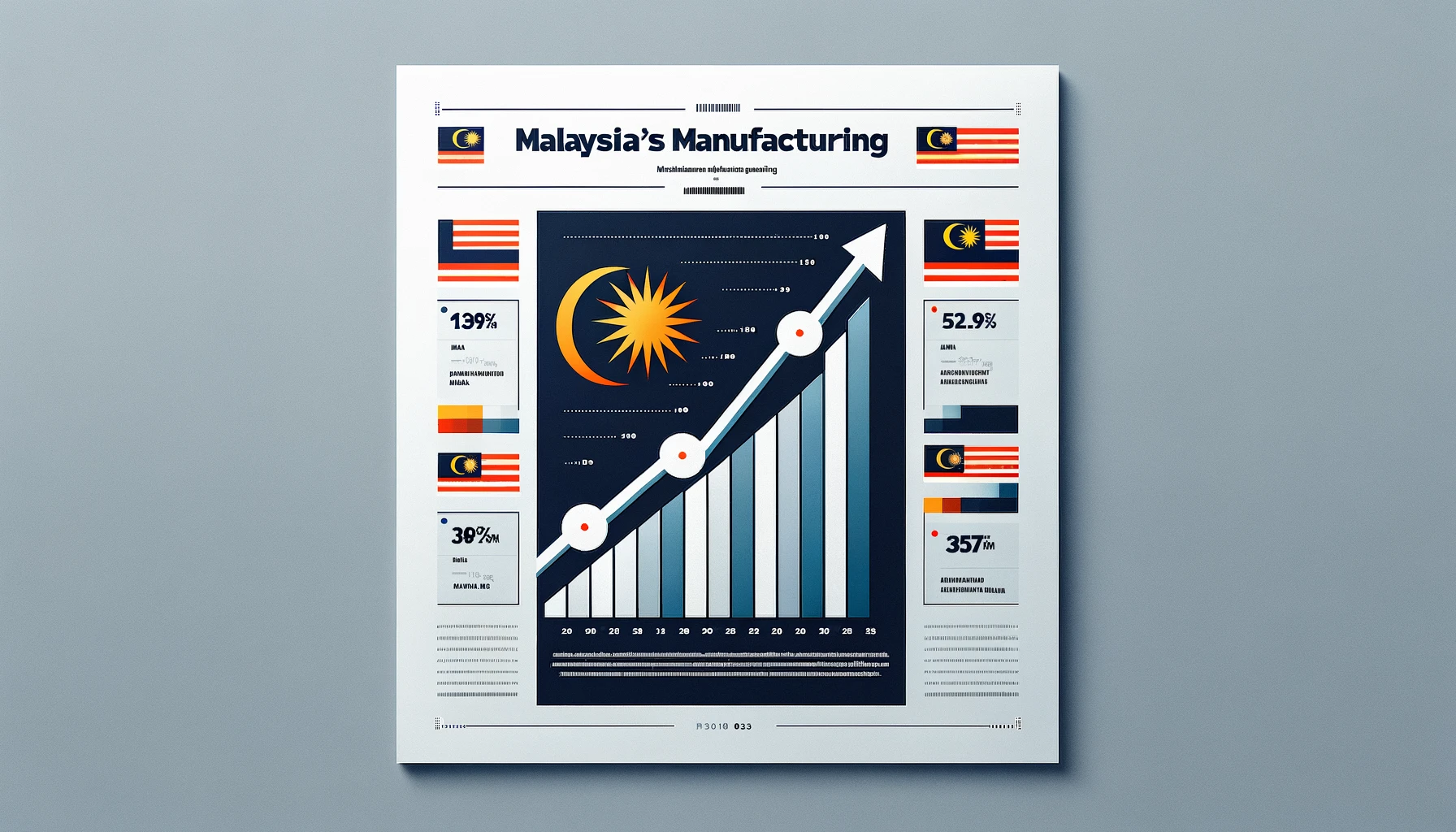
Petaling Jaya – The Department of Statistics Malaysia has released its annual report on the performance of the country’s manufacturing sector for the year 2023. Despite facing numerous challenges, the sector saw a slight increase in overall sales value, marking a year of resilience and adaptability for manufacturers across the nation.
Subtle Growth in a Tough Year
The statistics reveal a nuanced picture of the sector’s performance over the past year. With an overall sales value of RM1.8 trillion, the sector experienced a marginal growth of 0.2% compared with the previous year, 2022. This growth, albeit small, signifies the sector’s ability to withstand external pressures and maintain a steady course.
Monthly Performance Dips
However, the journey through 2023 was not without its downturns. December 2023, in particular, saw the largest monthly decline since May 2020, with sales value plummeting by 4.2% year-on-year to RM149.9 billion. This significant drop was primarily driven by the continuous decline in the petroleum, chemical, rubber, and plastic products sub-sector, which has been facing difficulties since June 2023.
Chief Statistician Uzir Mahidin highlighted the severity of the decline, noting a 13.6% drop in this sub-sector for December 2023, a steep fall from November’s -10.8%. Other sub-sectors, including electrical and electronics products, and food, beverages, and tobacco, also saw decreases, contributing to the overall dip in sales value.
Sectoral Analysis and Future Outlook
Despite the challenges faced in 2023, the manufacturing sector’s nuanced performance offers insights into both its resilience and areas requiring attention. Below, we delve into the specifics of the sector’s performance, including the dynamics of export versus domestic-oriented industries, and the implications for Malaysia’s economic trajectory.
Detailed Performance Breakdown
The manufacturing sector’s performance varied significantly across different sub-sectors and market orientations. Export-oriented industries, which account for nearly 70% of total sales, witnessed a sharper decline in December 2023, falling by 8.4% after a 6.9% reduction in November. This downturn was notably influenced by significant drops in the manufacture of coke and refined petroleum products, alongside declines in the production of vegetable and animal oils and fats, and computer, electronics, and optical products.
Conversely, domestic-oriented industries painted a more positive picture, with a 6.7% growth in December 2023, albeit a slight decrease from November’s 8.8%. This growth was primarily driven by substantial expansions in the manufacture of fabricated metal products, motor vehicles, trailers, semi-trailers, and food processing products.
Employment Trends
An interesting facet of the manufacturing sector’s resilience is reflected in its employment figures. In December 2023, the sector employed 2.37 million individuals, marking a 1.7% increase from December 2022. This growth in employment amidst challenging economic conditions underscores the sector’s critical role in supporting livelihoods and contributing to Malaysia’s socio-economic stability.
Implications for Policy and Industry
The mixed performance of Malaysia’s manufacturing sector in 2023 has significant implications for both policymakers and industry stakeholders. The resilience of domestic-oriented industries suggests a robust internal market that can serve as a buffer against external shocks. However, the vulnerability of export-oriented segments to global market fluctuations underscores the need for diversification and innovation in product and market development.
Looking Ahead: Strategies for Growth and Stability
As Malaysia’s manufacturing sector navigates the complexities of the global economy, several strategies emerge as critical for sustaining growth and enhancing resilience. These include:
- Diversification of Export Markets: Reducing reliance on traditional markets by exploring new regions and sectors can mitigate the impact of external economic downturns.
- Innovation and Technology Adoption: Investing in R&D and embracing digital transformation can enhance productivity and competitiveness, particularly in high-value manufacturing sub-sectors.
- Strengthening Domestic Markets: Encouraging the growth of domestic-oriented industries through supportive policies and incentives can provide a stable demand base for manufacturers.
- Sustainability and Green Manufacturing: Emphasizing sustainable practices can not only reduce environmental impact but also open up new markets and opportunities for eco-friendly products.
Key Takeaways
- The overall sales value of Malaysia’s manufacturing sector in 2023 reached RM1.8 trillion, marking a marginal growth of 0.2%.
- December 2023 witnessed a significant decline in sales value, with the largest drop since May 2020, primarily due to decreases in the petroleum, chemical, rubber, and plastic products sub-sector.
- Export-oriented industries faced greater challenges compared to domestic-oriented sectors, which showed positive growth.
- Employment within the sector increased, highlighting its importance in the broader economic context.
Malaysia’s manufacturing sector’s performance in 2023 exemplifies the resilience and adaptability of its economy in the face of global and domestic challenges. While the sector has faced significant hurdles, the foundation for future growth and stability remains strong, provided strategic initiatives are undertaken to address the vulnerabilities and capitalize on emerging opportunities. As Malaysia looks to the future, the manufacturing sector will undoubtedly play a pivotal role in shaping the nation’s economic landscape.
Featured Image courtesy of DALL-E by ChatGPT
